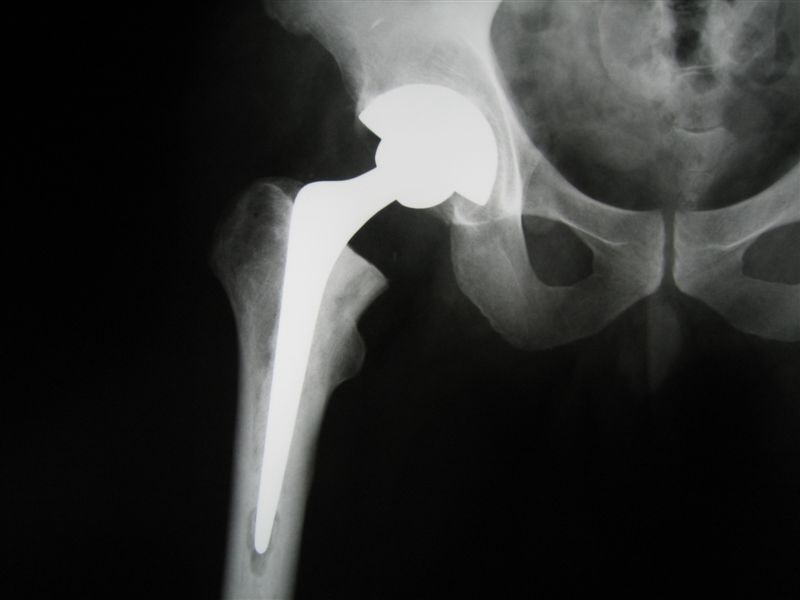Hip prosthesis. Types and complications.

Hip prosthesis. Types and complications.
According to the system of attachment of the implant to the bone the prostheses will be cemented (fixed with methylmethacrylate), non-cemented or biological or hybrid (one cemented component and another not). The decision of the fixation system varies at the discretion of the surgeon and there are excellent results with both techniques. Our criterion is in relation to bone quality, in general at the femoral level we use non-cemented implants in men up to 75 years and in women up to 70 years while at the acetabular level we usually use non-cemented implants in most cases.
There are countries such as the United States where almost all implants are non-cemented and others such as the United Kingdom with the majority of cemented cases regardless of the age or bone quality of the patient.
Another important difference to know is the friction pair. It refers to the materials that will contact during hip mobility. Perhaps this is where the most progress has been made in improving the rubbing surfaces be it metal, ceramics or polyethylene.
The most experienced friction pair is metal/polyethylene. Currently polyethylenes are better manufactured, are more resistant to wear (highly crisscrossed beams) and some include antioxidants such as vitamin E to lengthen their duration. Its long-term problems are known and detectable early.
The ceramic/ceramic friction pair also has a long experience but the problems that some implants presented years ago (noises or ruptures of material) as well as its price makes it not widely used. It appears to be the friction pair with less wear but is less tolerant to surgical technique errors.
The ceramic/polyethylene friction pair would be a combination of the above and is a good choice.
The metal/metal friction pair with a good implant and a perfect technique have good results but currently most scientific currents advise against its use due to the severity of problems that have arisen with implanted prostheses in recent decades.
In our opinion the most important factor for the correct functioning of a prosthesis as well as for a duration of more than ten-fifteen years, is its correct implantation. It is difficult to show if certain sports activities can alter the duration of the prosthesis but it would be advisable to avoid impact sports.
The most serious complication is the infection that can occur acutely, in the immediate postoperative period or after years due to an infection in another region of the body, and the chronic infection that does not have an explicit symptomatology but can be the cause of a painful prosthesis or the loosening of the same.
The other dreaded complication is dislocation or dislocation. The most frequent cause is usually the poor orientation of the components although there are other causes such as trauma, neurological problems or the wear and tear of the components among others.
We believe that the patient must be informed of the different options, the pros and cons but the decision of the implant must be the responsibility of the orthopedic surgeon. The patient can choose the surgeon.



